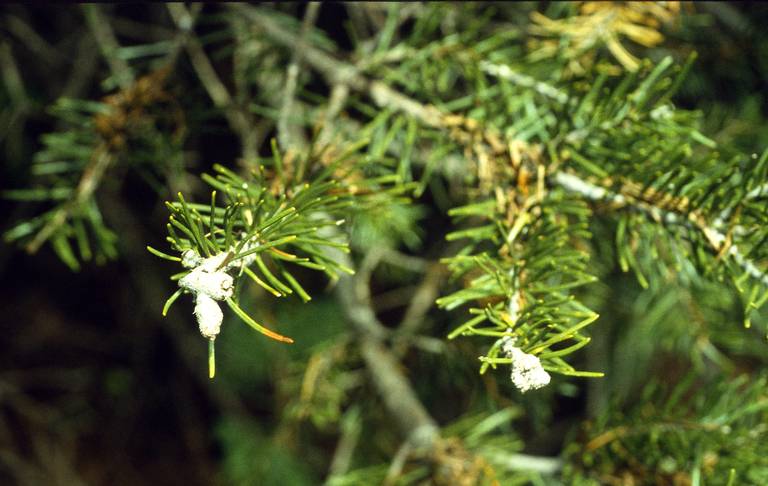Integrated Pest Management
Balsam Woolly Adelgid
 Balsam Woolly adelgid gouting (USDA Forest Service, Bugwood.org)
Balsam Woolly adelgid gouting (USDA Forest Service, Bugwood.org)
 Balsam woolly adelgid damage (David Beckman, ID Dept. of Lands, Bugwood.org)
Balsam woolly adelgid damage (David Beckman, ID Dept. of Lands, Bugwood.org)
HOSTS
- True firs such as grand fir and subalpine fir
DESCRIPTION
The balsam woolly adelgid (BWA) is an aphid-like, sap-sucking insect that is native to Europe and discovered in northern Utah around 2020. Adults are tiny (the size of a sharp pencil point) and are covered in a white, cottony material. Eggs and young stages are too small to be visually spotted.
BIOLOGY
BWA overwinters as young nymphs in bark crevices, and begins feeding in spring and maturing to adults. Adults lay up to 200 eggs on the bark and newly-hatched individuals are called crawlers. Crawlers wander the bark in search of a suitable feeding site or may be blown to nearby trees. Once crawlers start feeding, they are stationary for the rest of their lives. There are two generations in Utah.
SYMPTOMS
- Yellowing and bronzing of needles
- Stunted growth in saplings
- Woolly material near tree base, indicating masses of adelgids
- Abnormal swelling of branch nodes and buds called “gouting”
- Reduced cone production
GENERAL MANAGEMENT
New infestations on trees are difficult to detect due to BWA’s small size, so monitor fir trees regularly for symptoms, especially thinning foliage and stunting of the main leader. Inspect the bark for cottony masses, particularly near the soil-line.
INSECTICIDES
Due to their small size, protected feeding sites, and waxy coatings, aerial insecticide applications do not provide coverage adequate for large-scale insect control.
For Utah, the current recommendation is to target crawlers with a broad-spectrum insecticide, horticultural oil, or insecticidal soap in summer and/or fall.

